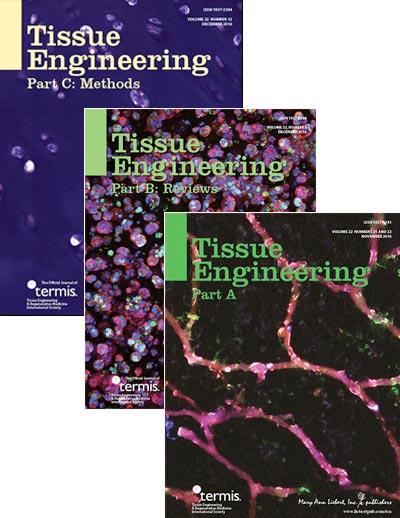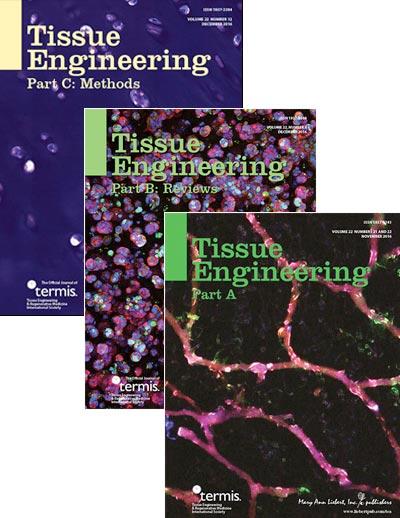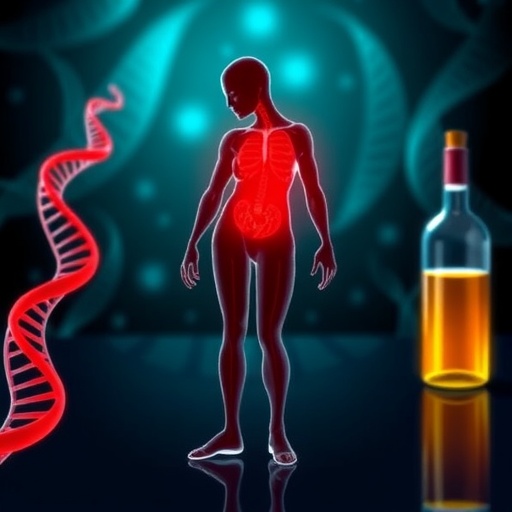
Credit: © 2017 Mary Ann Liebert, Inc., publishers
New Rochelle, NY, January 4, 2017–Researchers developed a biocompatible scaffold capable of controlled-release of silver ions and have shown in a new study that it can inhibit infection of bone by methicillin-resistant Staphylococcus aureus, known as MRSA. The antimicrobial properties of silver combined with a biodegradable scaffold that can be seeded with bone-forming stem cells offers a potential implant system for treating and preventing bone infection, as described in an article published in Tissue Engineering, Part A, a peer-reviewed journal from Mary Ann Liebert, Inc., publishers. The article is available free on the Tissue Engineering website until February 4, 2017. (http://online.liebertpub.com/doi/full/10.1089/ten.tea.2016.0063)
Mahsa Mohiti-Asli, PhD and coauthors from University of North Carolina at Chapel Hill, North Carolina State University (Raleigh), Silpakorn University (Nakornpathom, Thailand), and University of Missouri (Columbia), present an experiment in which they seeded bone-forming stem cells on three-dimensional scaffolds either with or without MRSA. The researchers assessed bacterial biofilm formation to determine the effect of silver ions on bone infection (osteomyelitis). They report their findings in the article entitled "Evaluation of Silver Ion-Releasing Scaffolds in a 3D Coculture System of MRSA and Human Adipose-Derived Stem Cells for Their Potential Use in Treatment or Prevention of Osteomyelitis."
"Hybrid therapeutic approaches such as this combination of a regenerative and anti-infective platform are transforming our attack on complex musculoskeletal diseases," says Co-Editor-in-Chief Peter C. Johnson, MD, Principal, MedSurgPI, LLC and President and CEO, Scintellix, LLC, Raleigh, NC.
Research reported in this publication was supported by the Clinical and Translational Science Awards (CTSA) program of the National Institutes of Health under grant numbers 550KR71418 and 550KR61325, and the National Institute of Biomedical Imaging and Bioengineering under grant number 1R03EB008790. The content is solely the responsibility of the authors and does not necessarily represent the official views of the National Institutes of Health.
###
About the Journal
Tissue Engineering is an authoritative peer-reviewed journal published monthly online and in print in three parts: Part A, the flagship journal published 24 times per year; Part B: Reviews, published bimonthly, and Part C: Methods, published 12 times per year. Led by Co-Editors-In-Chief Antonios G. Mikos, PhD, Louis Calder Professor at Rice University, Houston, TX, and Peter C. Johnson, MD, Principal, MedSurgPI, LLC and President and CEO, Scintellix, LLC, Raleigh, NC, the Journal brings together scientific and medical experts in the fields of biomedical engineering, material science, molecular and cellular biology, and genetic engineering. Tissue Engineering is the official journal of the Tissue Engineering & Regenerative Medicine International Society (TERMIS). Complete tables of content and a sample issue may be viewed online at the Tissue Engineering website.
About the Publisher
Mary Ann Liebert, Inc., publishers is a privately held, fully integrated media company known for establishing authoritative peer-reviewed journals in many promising areas of science and biomedical research, including Stem Cells and Development, Human Gene Therapy, and Advances in Wound Care. Its biotechnology trade magazine, GEN (Genetic Engineering & Biotechnology News), was the first in its field and is today the industry's most widely read publication worldwide. A complete list of the firm's 80 journals, books, and newsmagazines is available on the Mary Ann Liebert, Inc., publishers website.
Media Contact
Kathryn Ryan
[email protected]
914-740-2100
@LiebertPub
http://www.liebertpub.com





